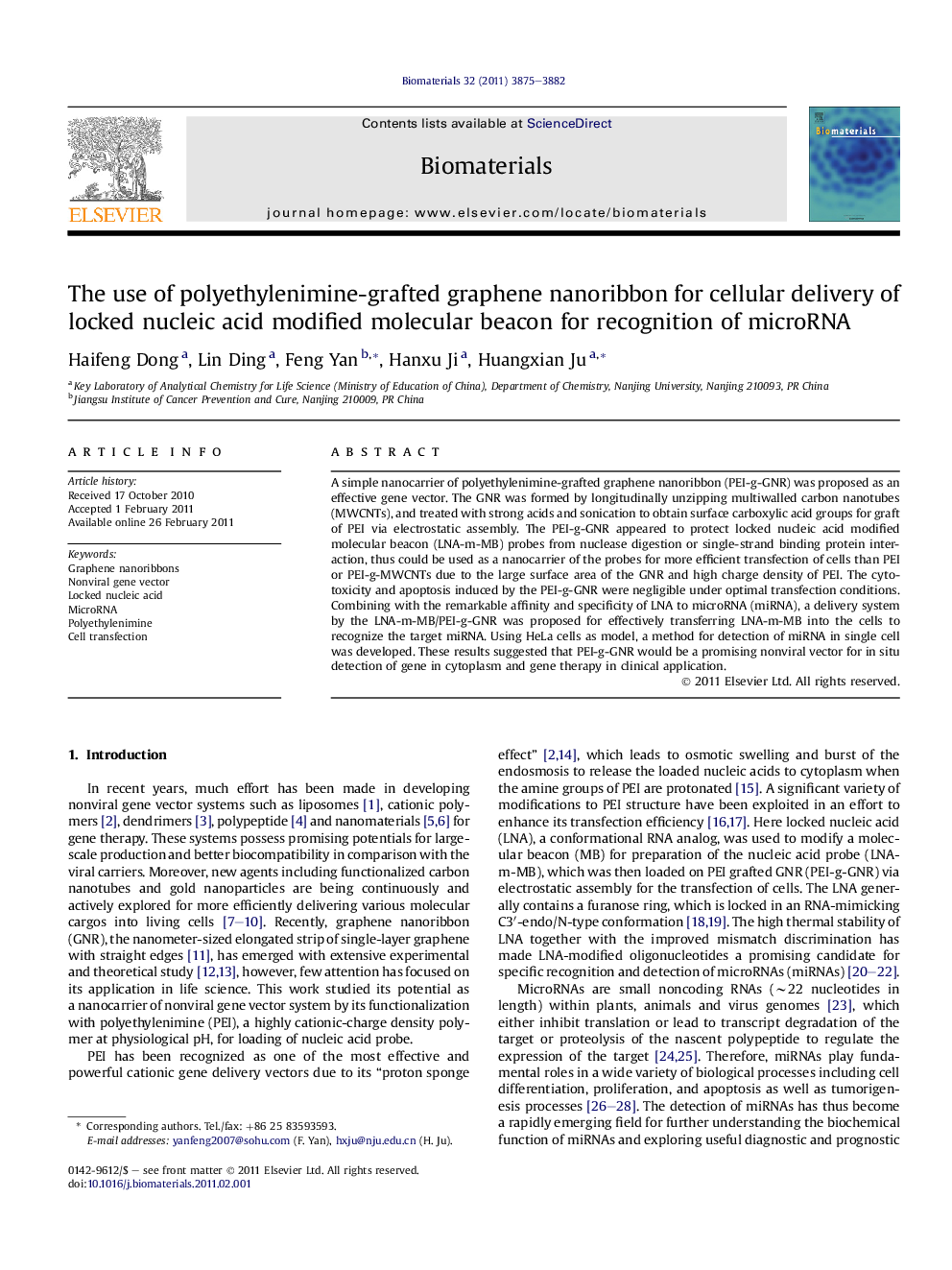| کد مقاله | کد نشریه | سال انتشار | مقاله انگلیسی | نسخه تمام متن |
|---|---|---|---|---|
| 8331 | 586 | 2011 | 8 صفحه PDF | دانلود رایگان |

A simple nanocarrier of polyethylenimine-grafted graphene nanoribbon (PEI-g-GNR) was proposed as an effective gene vector. The GNR was formed by longitudinally unzipping multiwalled carbon nanotubes (MWCNTs), and treated with strong acids and sonication to obtain surface carboxylic acid groups for graft of PEI via electrostatic assembly. The PEI-g-GNR appeared to protect locked nucleic acid modified molecular beacon (LNA-m-MB) probes from nuclease digestion or single-strand binding protein interaction, thus could be used as a nanocarrier of the probes for more efficient transfection of cells than PEI or PEI-g-MWCNTs due to the large surface area of the GNR and high charge density of PEI. The cytotoxicity and apoptosis induced by the PEI-g-GNR were negligible under optimal transfection conditions. Combining with the remarkable affinity and specificity of LNA to microRNA (miRNA), a delivery system by the LNA-m-MB/PEI-g-GNR was proposed for effectively transferring LNA-m-MB into the cells to recognize the target miRNA. Using HeLa cells as model, a method for detection of miRNA in single cell was developed. These results suggested that PEI-g-GNR would be a promising nonviral vector for in situ detection of gene in cytoplasm and gene therapy in clinical application.
Journal: Biomaterials - Volume 32, Issue 15, May 2011, Pages 3875–3882